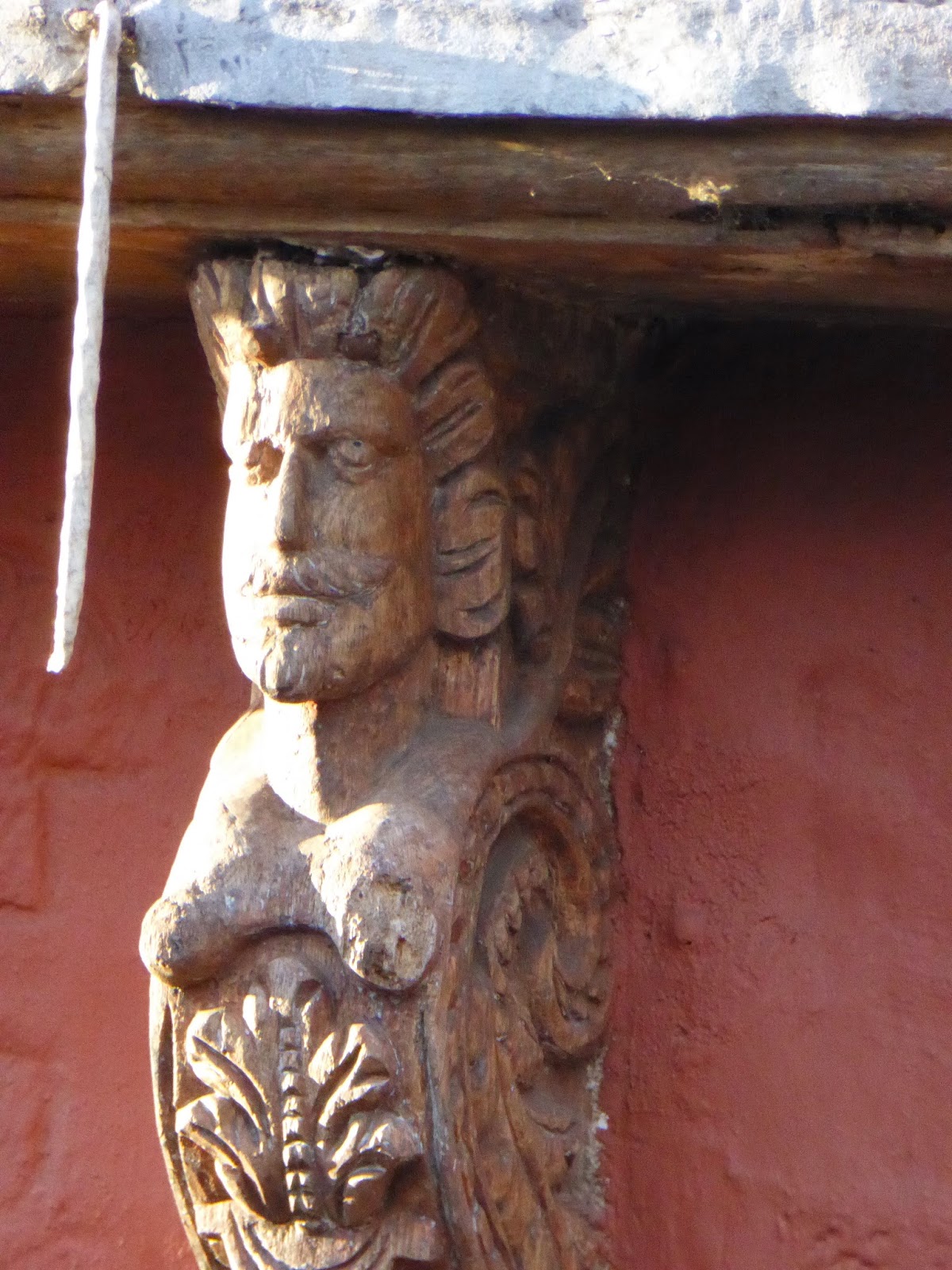Saturday, 17 January 2015
Saturday.
The photographs are of one of the more interesting houses in our town of interesting buildings. It has recently had all the carvings stripped of many layers of paint to show the fine detail.
As you will be able to see, if you enlarge the pictures, not only is the carving very confidently and well done, but at one stage all the plaster work of the house has been very competently pargetted.
I managed to get a close up photo of the date carved over the window photographed above. I find the date intriguing - 1653 would be right in the middle of the Commonwealth period, when the puritans were very much in power, and I can't imagine they'd approve of some of the carvings, or of the amount of sheer decorative work in the pargetted (and probably at one time painted) plaster.
Almost all the busts (please excuse the obvious pun) are equipped with beards and bosoms! It is sometimes known locally as 'the beards and boobs house'.
A stream runs under the road and past this end of the house. It used to be an Inn. Its original name was 'the Flying Chariot'. I find it one of the most fascinating buildings in our town.
Subscribe to:
Post Comments (Atom)





4 comments:
Just received a long email from Crowbard regarding the Flying Chariot, which he has researched. Like several old building in Highdale, the date on it is misleading. It was extensively redecorated in the 1650s (dated 1653), but the timber framework of the building dates from a couple of centuries before that. The bearded and bebosomed gentlemen carved on the windows, etc, are thought to be of Charles the second; the breasts (which would have been called 'the paps' in the seventeenth century) are a punning reference to the Stewart Kings' support by the Papacy. It all hangs together rather well.
P.s. Got called upstairs for breakfast at that point.
To continue :-
Crowbard further points out that the original name when the building first became an inn was the Royal Oak (which supports the Charles II connexion). It also explains what has previously puzzled me - that in 1653 those carvings would have been thoroughly unpopular with the puritans (who were in power) but NOT if those carvings were a standing joke at the Stewart Monarchs' expense, together with a sideswipe at the Roman Catholic Church. Then I think the place would have had the full approval of the Puritan party.
Thank you Crowbard. I think you've solved my problem for me.
Crowbard is the Mycroft to your Sherlock Mike. I love the idea of 17th Century architectural satire.
I noticed a house in Attleborough yesterday afternoon with "1547" on it but it turned out to be a large digital clock. It was a shoe repairer with the words "Cobblers to The Pope" under his name.
Hello Rog. Been chuckling at your story of the Norfolk firm of cobblers. Isn't it nice that we've got so much more subtle in our Political humour than in those coarse Commonwealth days of the Papacy supporting the Stewarts?
Post a Comment